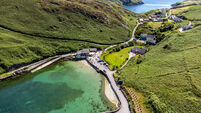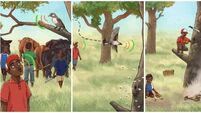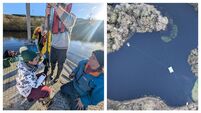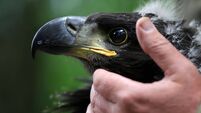Islands of Ireland: You can get to this Galway island by foot if you check the route and the tides
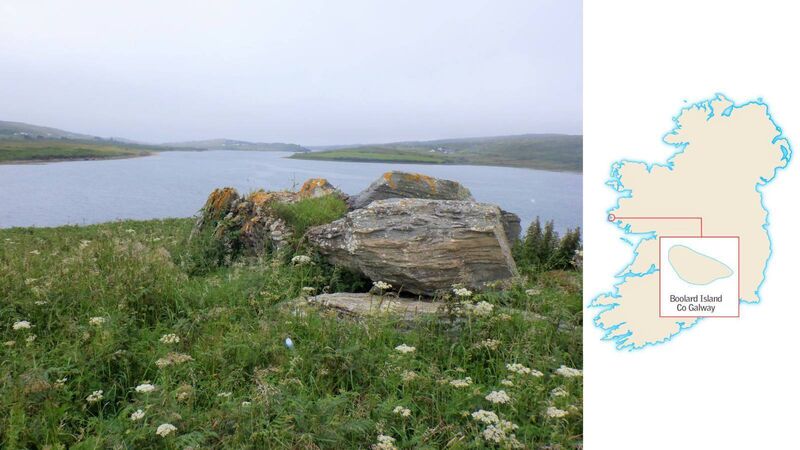
Islands of Ireland: Boolard Island, County Galway looking down Streamstown Bay. On the Sky Road, just west of Clifden. Picture: Dan MacCarthy
The ruin near the summit of this all-but-forgotten County Galway island must once have inspired a deep devotion. With magnificent views down the length of Streamstown Bay — one of the narrowest inlets the country — and a princely position as the only island in the bay it is a truly lovely location.
For here you are truly king or queen of all you survey. The views on a good day are sublime and if not quite to die for, then not far off.
On a bad day, such as the one I chose to visit in July, the island was draped in an impenetrable murk that offered little in the way of appeal. It is a moot point that the inhabitants of what is now a ruin must have felt a similar despondency on such days.
On such all-consuming misery can lasting impressions be made but for those prepared to give destinations a second chance a revelatory beauty can be found. Certainly, the house was abandoned by 1841 and its occupants slid into history. Its central location in the 12 acres of the island, now an ocean of ferns, must have been chosen as a vantage point but not against the prevailing westerlies as zero tree cover was available. In this respect, it is quite an unusual island in that the owners did not seek lower ground on which to build but instead chose the view of Streamstown Bay.
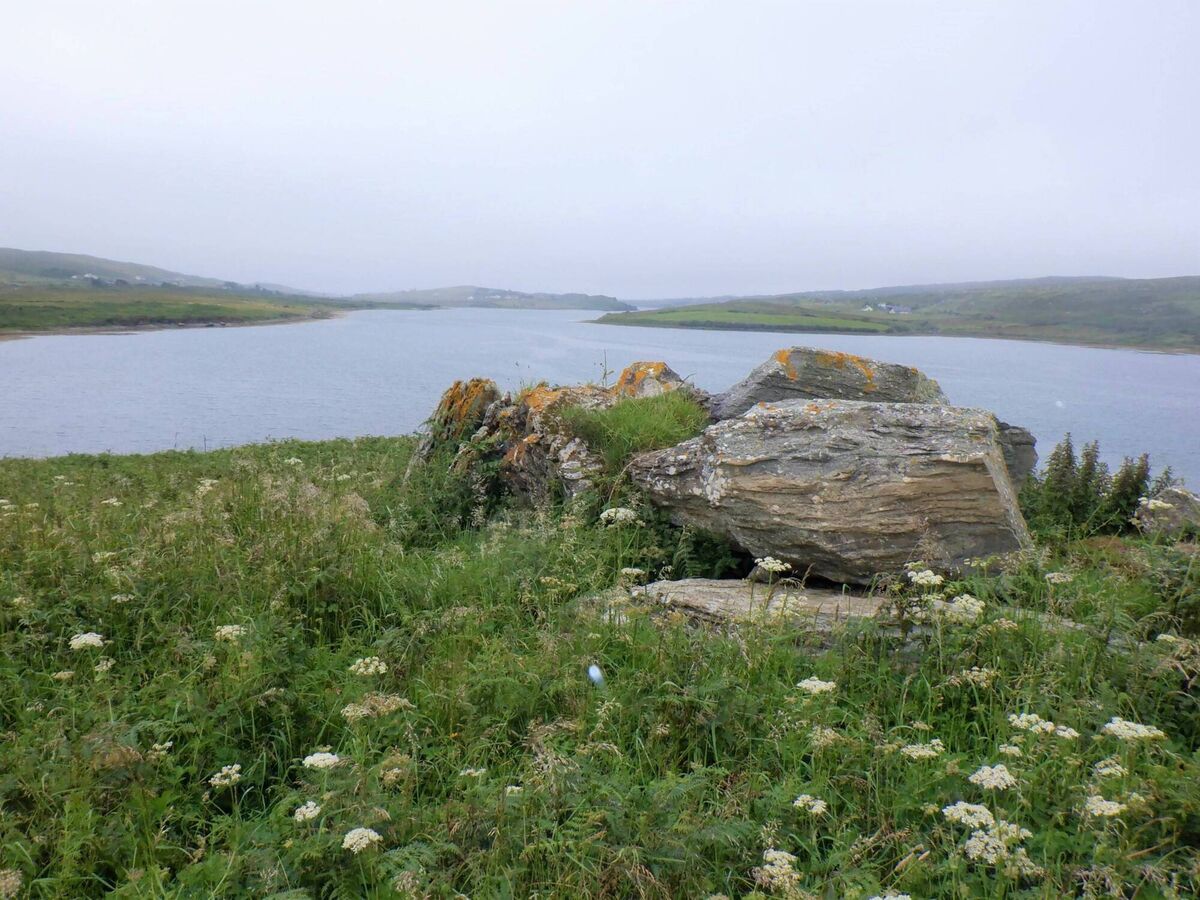
Boolard Island lies within the Civil parish of Omey which has one of the most beautiful islands in the country as the jewel in its crown. That island, Omey, is defined by sand as it is exposed to the full force of the Atlantic, whereas Boolard, in the benign throat of the Streamstown Bay, is entirely grasses of one type or another. It can be reached at low tide on foot but local knowledge is needed to find a suitable path as is an up-to-date tides table booklet. It is a mere 60m from the shore.
The surrounding waters have been regularly used for oyster farming and for a long time the prevalence of the beds has been a source of irritation to the island’s owners who have regarded them as interfering with access to the island. At the turn of the 20th-century proceedings were taken against an oyster farmer restraining him from interfering with direct access to the island.
Boolard Island takes its name from the adjacent townland Boolard. An Bhuaile Ard which refers to ‘the high sheep pen’, though at 23m the island can barely be said to qualify on this score. Just below its summit, a collection of rocks are arranged that look suspiciously like a prehistoric monument, perhaps a wedge tomb. However, there the perception ends, for no entry is evident in the archaeological record.
At the end of the Famine, the island was in the possession of the Reverend Anthony Magee who was a bit of an island hopper of the time as he held ownership of Cruagh, High, and Friar Islands. Whether the reverend managed to extract any profit from the grazable Boolard Island is uncertain, though entirely possible.
Boolard Island is viewable from that marvellous tourist route known as the Sky Road which twists and winds its way through wonderful countryside westwards from the bustling town of Clifden through the rustic baronies of the Kingston Peninsula. These were the lands that were the stronghold of the Conroys in the 17h century — a name which still has strong associations with the area as does its mistranslation ‘King’ according to Tim Robinson in .
Several islands that have appeared in this series can be seen on the southern part of the Sky Road including Turbot Island and Inishturk. Beyond, are the shimmering glories of Cruagh and the old monastic settlement of High Island. (And Friar’s Island, still elusive, yet to be conquered for this column).
: No ferry. Kayak appears to be the only way as a dearth of villages and even piers in Streamstown Bay precludes opportunities to visit. There are several access points to the island on the mainland north and south.





